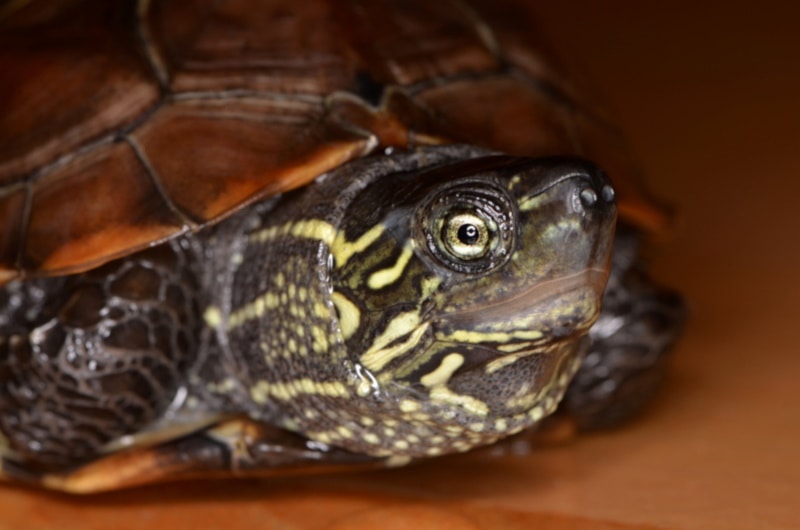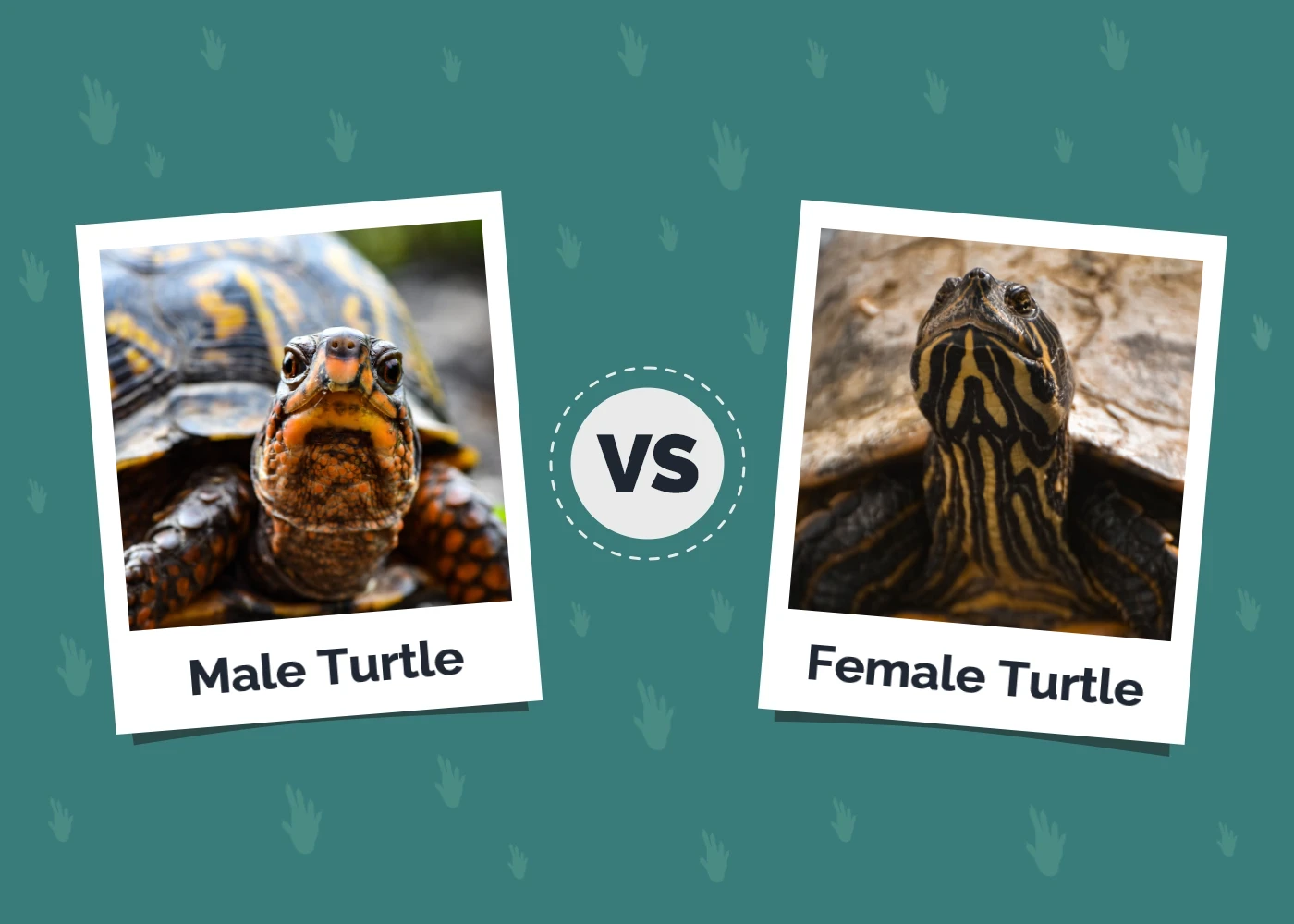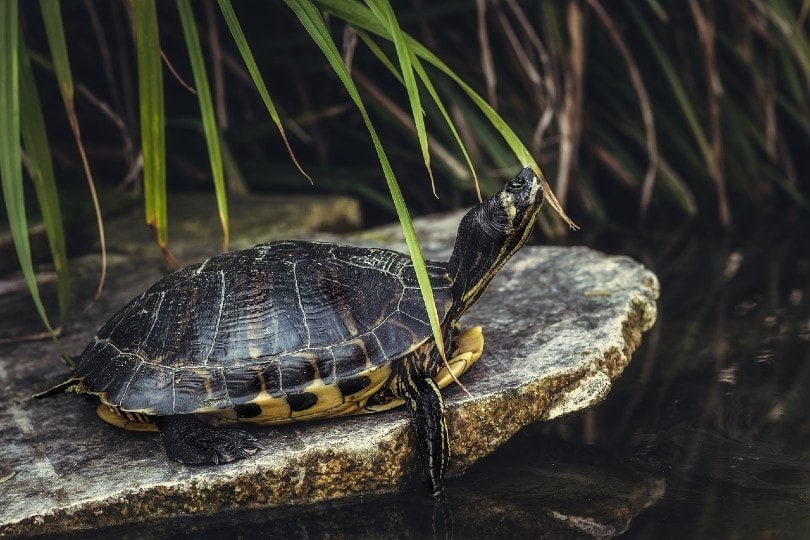Tortoise vs. Turtle: Differences & Comparison (With Pictures)
Updated on
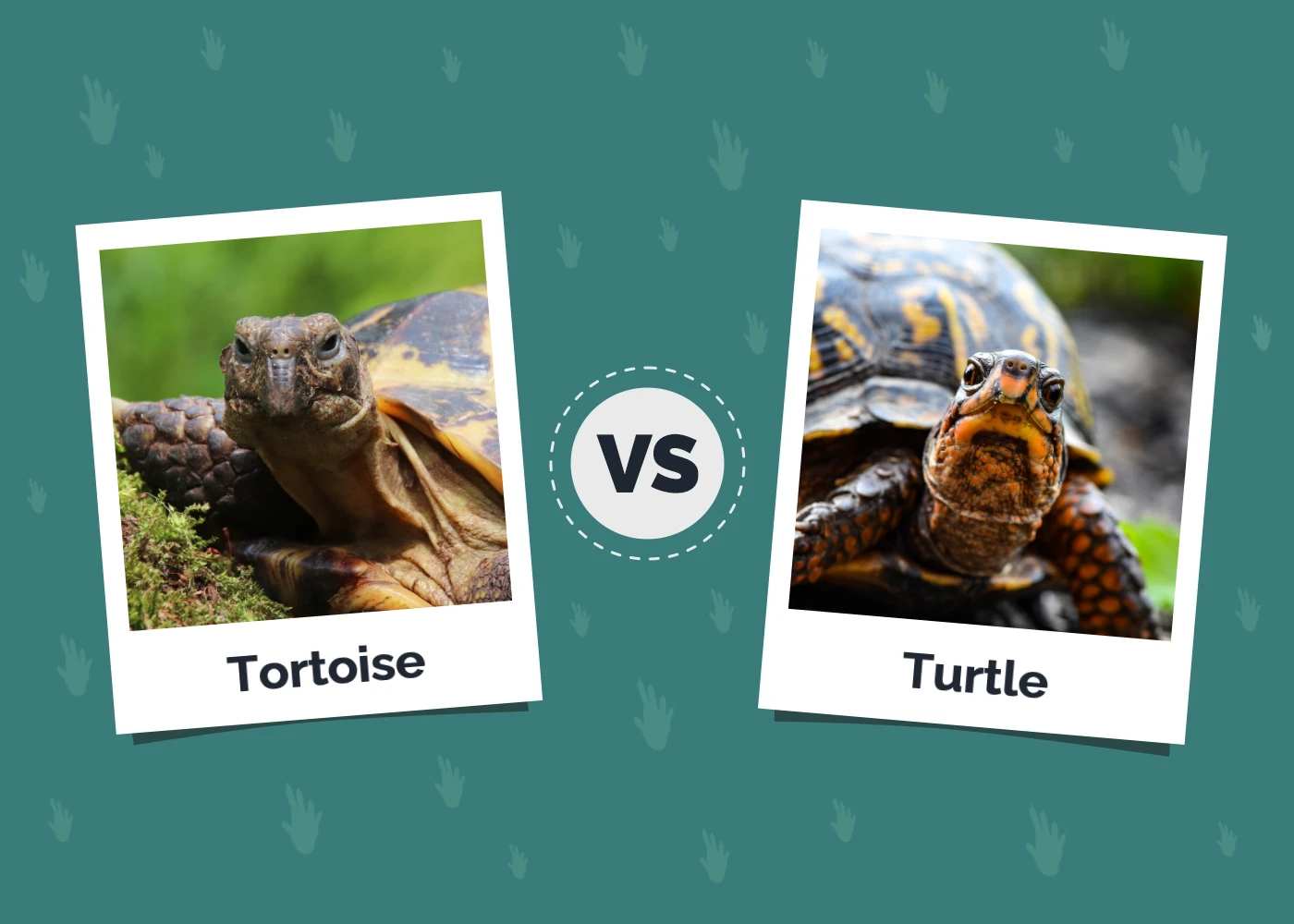
Click to Skip Ahead
Are you considering getting a pet turtle or a pet tortoise? Do you know the difference between the two?
When people mention turtles, they’re mainly referring to reptiles that have a shell. All tortoises are turtles but not all turtles are tortoises! There are aquatic turtles, which primarily live in the water, and land turtles, which primarily live on the land and are better known as tortoises. So, in this article, “turtles” refer to aquatic turtles, and “tortoises” refer to land turtles.
Read on for more details about tortoises and turtles and their differences to help you determine which animal is the right pet choice for you.
Visual Differences
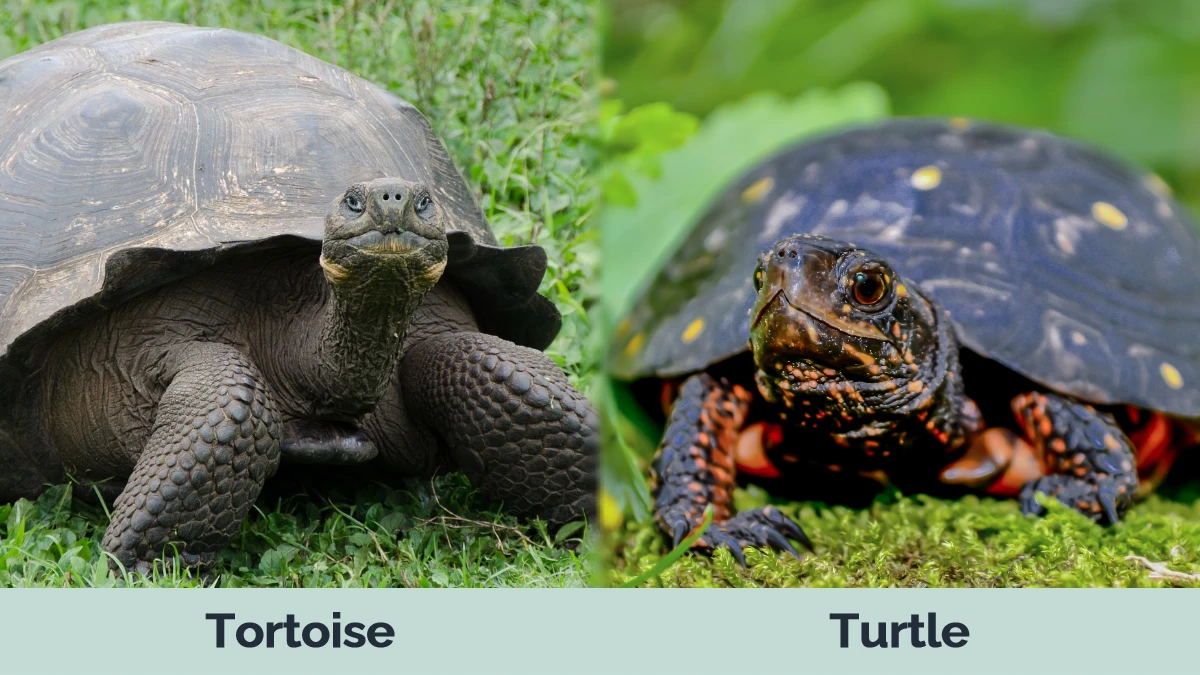
At a Glance
- Distribution: Widespread on all continents except Australia and Antarctica. Also inhabit many islands
- Size: 4–48 inches (depending on the species)
- Lifespan: 10–150 years (depending on the species)
- Domesticated?: Semi (can be kept as pets but also live in the wild)
- Distribution: Found all over the world in a wide variety of environments. Greatest number of species found in North America and South Asia.
- Size: 3–84 inches (depending on the species)
- Lifespan: 10–150 years (depending on the species)
- Domesticated?: Semi (can be kept as pets but also live in the wild)
Tortoise Overview

Tortoises are unique reptiles that have been around since the dinosaur era, and it’s believed that they originated from the area of South Africa. These magnificent creatures belong to the Testudines order and can be found living worldwide in the wild, though they’re commonly kept as pets.
While there are numerous different tortoise species living in this world, only some are popular pets, including:
- Pancake Tortoise
- Hermann’s Tortoise
- Red-Footed Tortoise
- Russian Tortoise
- Sulcata Tortoise
Characteristics & Appearance
Tortoises come in various colors, shapes, and sizes, depending on their species. These animals can grow between 4 and 48 inches in size, and they have incredibly long lifespans that can be anywhere from 10 to 150 years.
Their bodies are designed for spending time on the land, which is why tortoises have domed, rounded shells, log-like forelegs, and “elephantine” hind legs. All of these features enable tortoises to move their often large and heavy bodies around more easily.

Habitat
In the wilderness, tortoises inhabit all kinds of habitats, from deserts and grasslands to wet evergreen forests, sea-level areas, and even mountains.
The housing and habitat for a tortoise kept in captivity will vary based on their species and size. The space should be adequately padded with a substrate material and have a sleeping area, decoration rocks, branches, and other things that your tortoise can explore.
Your tortoise should also have a safe and available outdoor space to roam freely and explore the environment while protected from predators and possible threats.
Caring for a Pet Tortoise
Generally speaking, caring for tortoises as pets is relatively easy if you get their diet and environment correct. It’s very important to carefully research the requirements of your species, however, there are several things that you should know about caring for a pet tortoise in general:
- Tortoises can transfer various diseases to humans, so you’ll need to learn how to handle them safely. Always wash your hands thoroughly with soap and water after handling your reptile.
- Tortoises are cold-blooded reptiles, meaning you’ll need to provide them with an external heat and humidity source.
- Generally speaking tortoises need a low-protein, high-fiber diet with adequate calcium.
- Tortoises need large spaces to roam around, preferably indoors and outdoors.
- Tortoises are easier to care for than a dog or a cat; however, they are still messy animals, which is something to remember before getting them as pets.
- Tortoises have extremely long lifespans and require a serious commitment; you need to be sure you’re looking for a lifelong companion.
Turtle Overview
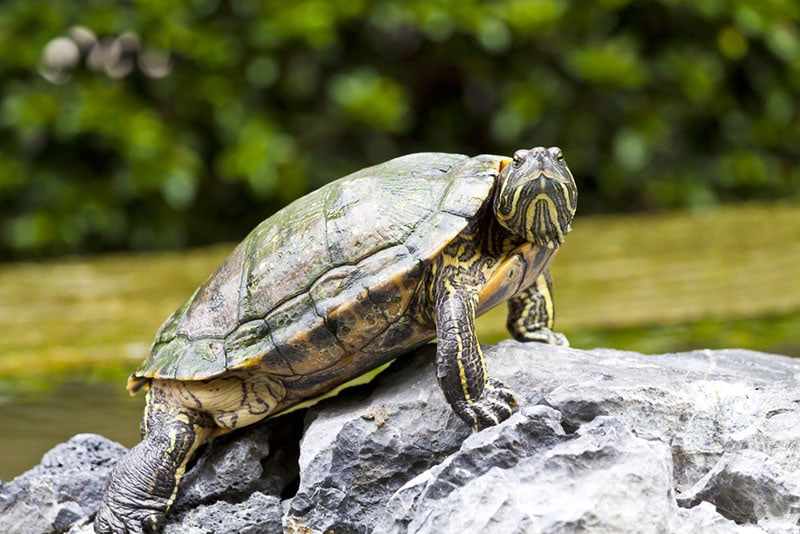
There’s evidence that turtles first appeared around 230 million years ago. It’s believed that these animals come from the area of Asia, though there’s no solid evidence to support those claims.
There are many living turtle species, but some are more popular than others as pets; these include:
- Ornate Box Turtle
- Three-Toed Box Turtle
- Painted Turtle
- Spotted Turtle
- Yellow-Bellied Slider
- Red-Eared Slider
Characteristics & Appearance
Like tortoises, turtles come in various shapes, colors, and sizes depending on their species. In size, pet turtles are generally larger than pet tortoises, reaching between 3 and 63 inches in length (depending on the species) . Leatherback sea turtles are the largest turtles, growing up to seven feet long. These reptiles also have extremely long lifespans that can last between 10 and 150 years.
A turtle’s body is more adapted to living in the water than living on the land. They have streamlined shells that aid them in swimming. To easily move through the water, turtles have flipper-like legs and webbed feet.
Many turtle species known to people are threatened, endangered, or extremely rare. Still, several species are suitable for being kept as pets.

Habitat
Turtles inhabit all kinds of terrains in the wilderness, from wetlands, lakes, and rivers to seas and any other watery areas with plenty of vegetation.
In captivity, turtles should have a large habitat that closely mimics their natural environment, so you must research your particular species. The enclosure size for a turtle will vary based on their breed, sex, and age. Small turtle species may be able to be kept in 20–30-gallon enclosures, while many large species require 60–120-gallon aquariums.
Turtles can be excellent at climbing, so their enclosure should be tall enough to prevent them from escaping.
Caring for a Pet Turtle
Here’s a list of essential things that anyone considering owning a turtle should know:
- Turtles can transfer various diseases to humans, so you’ll need to learn how to handle them safely.
- Turtles are cold-blooded reptiles, meaning you’ll need to provide them with an external heat and humidity source.
- Turtles require water filtration to keep their enclosure in good shape; without it, you will need to change the water daily, which is inconvenient.
- Turtles require a long-term commitment because they can live for over 50 years; you should be 100% sure you’re ready for such a responsibility.
What Are the Differences Between Tortoises and Turtles?

Appearance
Both turtles and tortoises are reptiles that have shells on their backs, but their respective body anatomy is different, which is obvious once you know what to look for.
This chart shows the main physical differences between tortoises and turtles.
- Size (depending on species) – 4–48 inches in length
- Legs – Club-like forelegs, “elephantine” hind legs
- Shell – Domed, rounded shells
- Size (depending on species) – 3–84 inches in length
- Legs – Flipper-like legs, webbed feet
- Shell – Streamlined shells that aid them in swimming
Habitat & Lifestyle
The major differences between tortoises and turtles are their habitats and lifestyles. Here’s what you need to know:
- More adapted to living on the land, which is why they mainly spend time in dry terrain
- Generally vegetarians
- More adapted to living in the water, though they do spend some of their time on land. With water as their primary habitat, they mainly inhabit ponds, rivers, lakes, seas, and other terrains with water elements
- Usually omnivores
Which Animal Is the Right Pet Choice for You?
Both tortoises and turtles can be excellent pets for reptile lovers because they’re intelligent, docile, and can be easier to care for than most domestic pets. Still, both of these unique reptiles have extremely long lifespans, so anyone who’d like to have one of these animals as a pet should be prepared for a serious commitment.
Another thing to remember is that turtles and tortoises are friendly but shouldn’t be handled unless necessary. If you’re looking for a cuddly pet that you can play with, you should consider other options.
Featured Image Credit: Left – Haoss, Shutterstock | Right – David Dibert, Pexels


